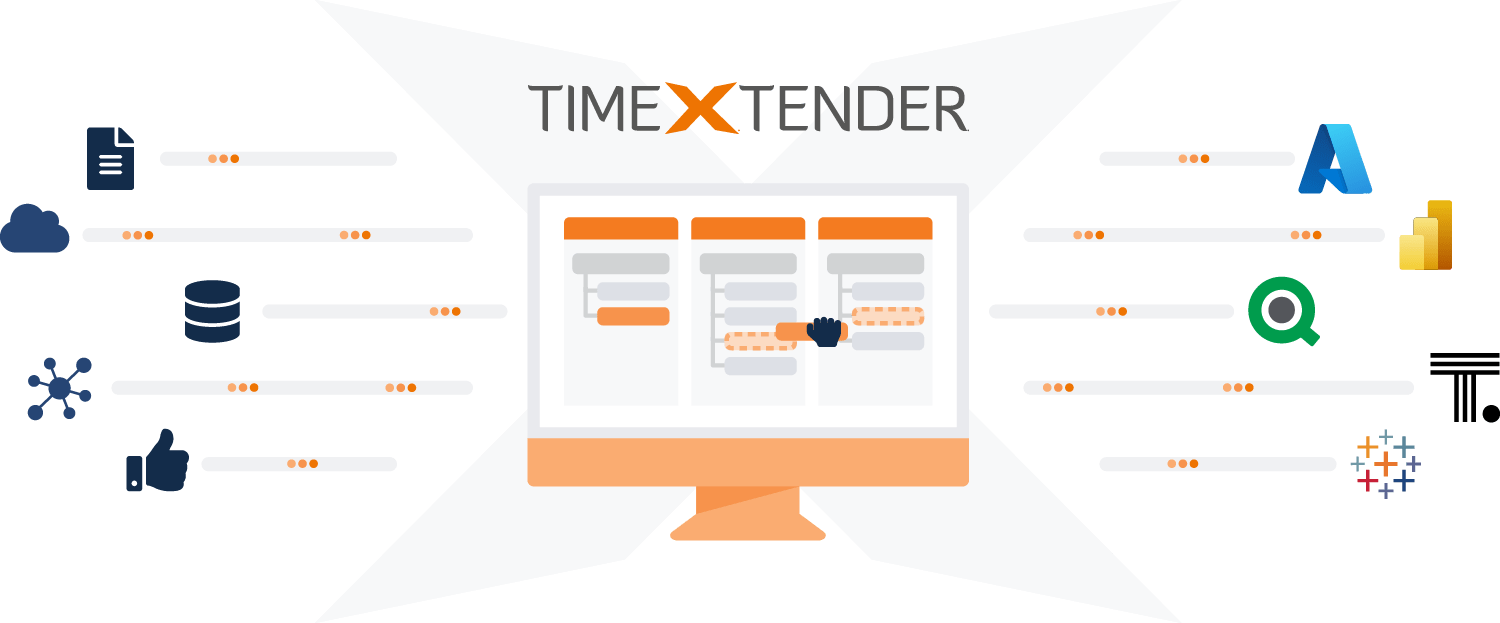3 min read
Scaling Your Data Storage in The Cloud
Written by: Heine Krog Iversen - CEO, TimeXtender - June 10, 2020

The volume of data that industries, businesses and consumers generate is truly astounding. All this new information means that corporations are inundated with fresh data at an unprecedented rate.
Having this much data is an asset and an opportunity for companies, and therefore, a blueprint is needed for cultivating it. The cloud has become the logical place for doing so.
Infrastructure-as-a-Service (IaaS) for cloud computing offers businesses a "pay-as-you-go" model for computing hardware, storage, backup, software, data partitioning, networking, servers and more. IaaS is a secure, flexible and feasible solution that allows organizations to strategically scale their data storage now and into the future. The capabilities of leading cloud options like Microsoft Azure, AWS and Google Cloud make cloud migration a serious business strategy.
Here's how:
- You can scale by outsourcing your data storage. If you purchase too much equipment and technology to support your data needs and end up not using all of your purchased assets, you've wasted a lot of your IT budget. On the other hand, if you acquire too little, you're left with an underperforming data architecture. This option protects against both miscalculations.
- Migration to the cloud allows organizations to lower the total cost of data storage by paying for only the hardware and software they use. It lessens the capital costs for a data center infrastructure for facilities, hardware and storage.
- IaaS provides future-proofing as organizations can quickly adapt to changing needs and advancements. A company doesn't have to worry about upgrades, downtime or disaster recovery — the IaaS provider takes care of it all.
- The cloud enables corporate users to have a central location to access data at any time from any location. This is advantageous for employees requiring remote access and mobility while traveling. Having this single, centralized location for your data can help break down issues associated with data silos.
- Organizations are right to be concerned about security when deploying in the cloud, but cloud migration can actually help improve enterprise security. Cloud providers keep a constant, watchful eye on potential security threats and provide advanced encryption. This model can also help prevent security threats than can be generated inside an organization.
For these reasons, the cloud-storage market has been on fire. According to a Gartner, Inc. press release, the IaaS market grew from $32.4 billion in 2018 to $40.3 billion in 2019.
It requires careful consideration when choosing a cloud solution. Here are a few important factors to think about when evaluating different cloud solutions.
Processing Power: Historically, the way systems would traditionally process data has been through a relational database such as SQL Server. This was done using what is known as symmetric multiprocessor (SMP). SMP would allocate tasks or queries to a single CPU one at a time, and it didn't matter how many CPUs were part of a company's database. As you can imagine, this type of linear processing cannot handle the data proliferation that companies are experiencing.
The good news is that massively parallel processing (MPP) is available. Processing large volumes of data by processors running in parallel allows for substantially faster data processing tasks to be completed. You should evaluate the processing power of cloud options as part of your selection process.
Costs: You might consider a solution that runs storage and computing requirements independent of each other. With this model, when demand is low from corporate users, the price is reflected in that lower level of usage, leading to a cost savings for the company.
Scope: Some cloud solutions offer a stronger combination of IaaS, platform as a service (PaaS) and software as a service (SaaS), and this could be of importance to you. With PaaS, developers can quickly and easily design new applications and test and deploy them when ready. You might also evaluate their capability for AI and machine learning.
Hybrid: For companies looking to shift some data to the cloud and maintain some on-premises, consider how the different cloud options would impact your needs for hardware, software, components, services and applications. In addition, consider how flexible the cloud solution will be for addressing your specific requirements regarding your architecture across data centers, office locations, and the cloud.
Familiarity: For some organizations, the cloud option that they choose may be one that is aligned with their existing technology infrastructure. Doing so could provide comfort, help ensure peace of mind, and offer users familiarity between both technology sets. It could also lead to a more seamless alignment between existing enterprise technologies and future cloud technologies.
Get The Most From Cloud Scaling Your Data Storage
Cloud migration can provide a real competitive advantage for you when looking to scale your data storage. You save significant labor costs by reducing the time to fix outages, manage upgrades and install new technology. You also empower staff to work on other game-changing initiatives. You save even more in having fewer costs to support equipment space, power and cooling.
Once you've made the decision to migrate your data storage to the cloud, you must weigh the pros and cons to ensure you’re choosing the right cloud solution suitable for your organization. In doing so, you'll want to also consider how to manage your data landscape so that your final destination is a modern data estate that supports your cloud-scale analytics and AI program.




